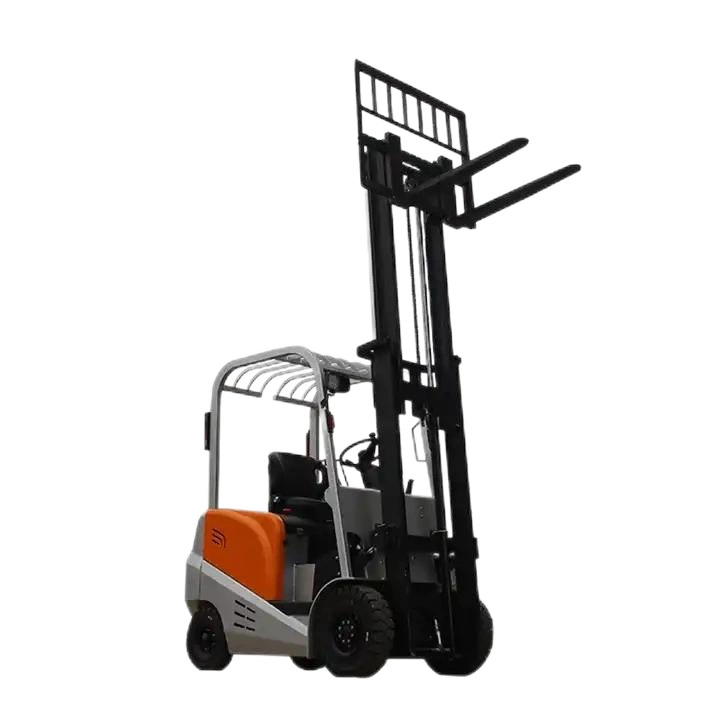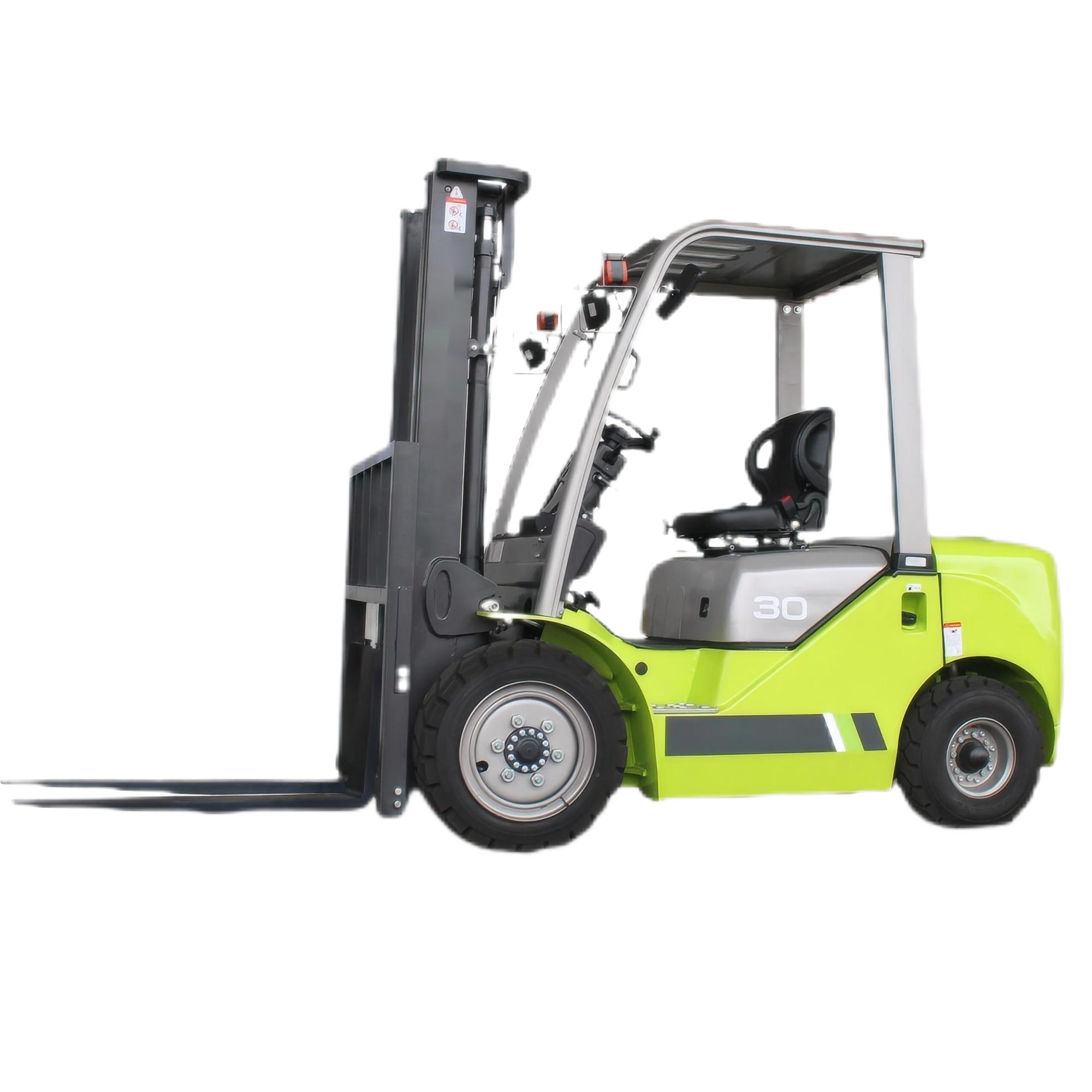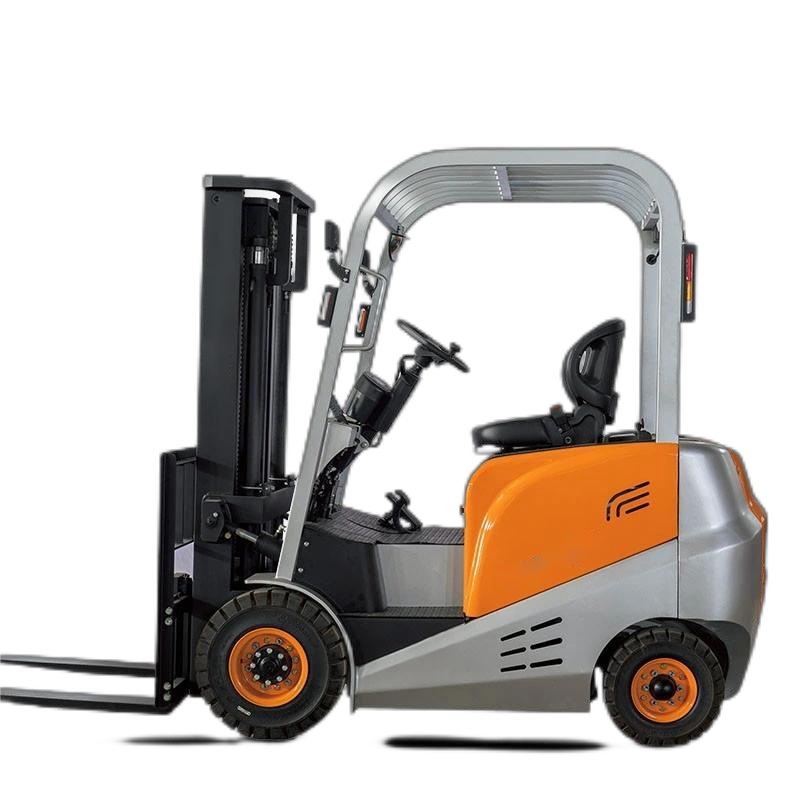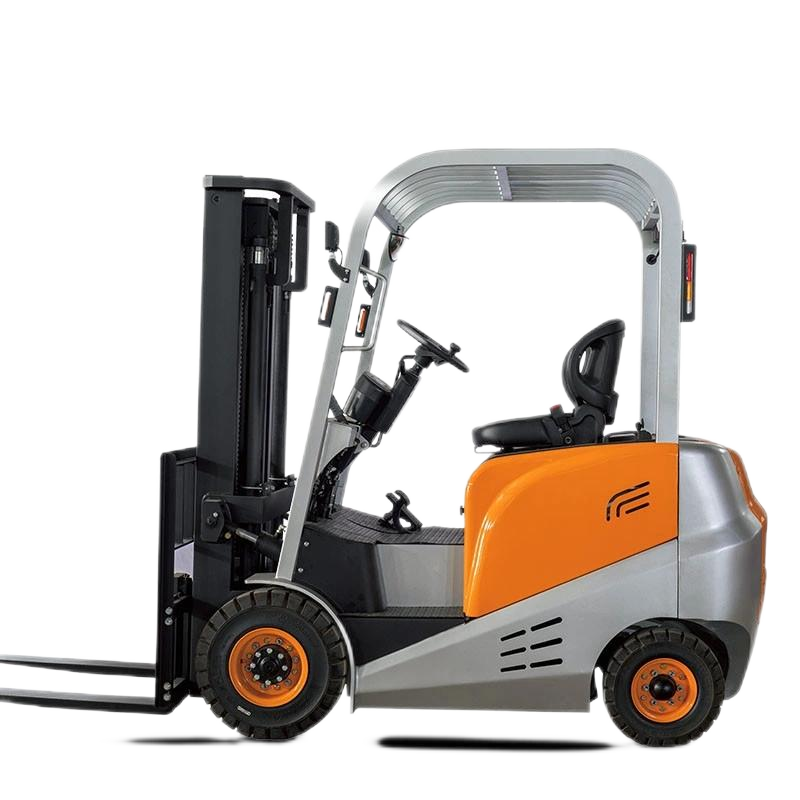The following are the operation procedures for electric forklifts:

Inspection before Operation
Appearance Inspection: Check whether the tires, lights, horns, rearview mirrors, etc. of the forklift are in good condition, and whether there are any damages such as cracks and deformations on the vehicle body.
Hydraulic System Inspection: Check whether the hydraulic oil level is normal, and whether there is any oil leakage at the oil pipes, joints and other parts.
Electrical System Inspection: Check whether the battery connection wires are secure, whether the battery charge is sufficient, and whether the indicator lights and instruments on the dashboard are working properly.
Manipulation Mechanism Inspection: Check whether the steering wheel, brakes, accelerator, lifting handle, tilting handle and other manipulation mechanisms are flexible and reliable, and whether their strokes meet the requirements.
Appearance Inspection: Check whether the tires, lights, horns, rearview mirrors, etc. of the forklift are in good condition, and whether there are any damages such as cracks and deformations on the vehicle body.
Hydraulic System Inspection: Check whether the hydraulic oil level is normal, and whether there is any oil leakage at the oil pipes, joints and other parts.
Electrical System Inspection: Check whether the battery connection wires are secure, whether the battery charge is sufficient, and whether the indicator lights and instruments on the dashboard are working properly.
Manipulation Mechanism Inspection: Check whether the steering wheel, brakes, accelerator, lifting handle, tilting handle and other manipulation mechanisms are flexible and reliable, and whether their strokes meet the requirements.
Starting and Driving
Starting: Insert the key into the ignition switch, turn on the power supply, wait until the indicator lights on the dashboard complete the self-check, confirm that there are no abnormal conditions, and then press the accelerator pedal to start the forklift.
Driving:
Before starting, observe the surrounding environment. After confirming safety, honk the horn to signal and start slowly.
When driving, the vehicle speed should be reasonably controlled according to the road conditions and the weight of the goods. Generally, the driving speed on flat ground should not exceed 10 km/h. In the case of turning, going downhill or poor visibility, the speed should be even slower.
Maintain an appropriate safety distance, keeping at least more than 3 meters away from the vehicle in front, and avoid sudden braking and sharp turns.
Pay attention to observing various indicators on the dashboard, such as battery charge, water temperature, oil pressure, etc. If any abnormalities are found, stop the vehicle immediately for inspection.
Starting: Insert the key into the ignition switch, turn on the power supply, wait until the indicator lights on the dashboard complete the self-check, confirm that there are no abnormal conditions, and then press the accelerator pedal to start the forklift.
Driving:
Before starting, observe the surrounding environment. After confirming safety, honk the horn to signal and start slowly.
When driving, the vehicle speed should be reasonably controlled according to the road conditions and the weight of the goods. Generally, the driving speed on flat ground should not exceed 10 km/h. In the case of turning, going downhill or poor visibility, the speed should be even slower.
Maintain an appropriate safety distance, keeping at least more than 3 meters away from the vehicle in front, and avoid sudden braking and sharp turns.
Pay attention to observing various indicators on the dashboard, such as battery charge, water temperature, oil pressure, etc. If any abnormalities are found, stop the vehicle immediately for inspection.
Loading and Unloading of Goods
Loading:
Drive the forklift slowly towards the goods, adjust the position of the forks so that they are aligned with the fork holes or pallets of the goods.
Operate the lifting handle to raise the forks to an appropriate height, and then insert the forks into the goods to ensure that the goods are placed steadily on the forks.
Operate the tilting handle to make the forks tilt slightly forward to prevent the goods from slipping off during driving.
Unloading:
Drive the forklift to the unloading site. After parking, operate the tilting handle to make the forks tilt backward, and place the goods steadily at the designated position.
Operate the lifting handle to lower the forks and move away from the goods.
Loading:
Drive the forklift slowly towards the goods, adjust the position of the forks so that they are aligned with the fork holes or pallets of the goods.
Operate the lifting handle to raise the forks to an appropriate height, and then insert the forks into the goods to ensure that the goods are placed steadily on the forks.
Operate the tilting handle to make the forks tilt slightly forward to prevent the goods from slipping off during driving.
Unloading:
Drive the forklift to the unloading site. After parking, operate the tilting handle to make the forks tilt backward, and place the goods steadily at the designated position.
Operate the lifting handle to lower the forks and move away from the goods.
Parking after Operation
Parking: Drive the forklift to the designated parking area, press the brake pedal to stop the vehicle steadily, turn off the power supply, and pull out the key.
Fork Placement: Lower the forks to the lowest position so that the forks are in contact with the ground to prevent the forks from accidentally rising and causing danger.
Cleaning and Maintenance: Clean up the sundries and dust on the forklift, check all parts of the vehicle. If any abnormal conditions are found, record them in a timely manner and report them to the maintenance personnel for maintenance and repair.
Parking: Drive the forklift to the designated parking area, press the brake pedal to stop the vehicle steadily, turn off the power supply, and pull out the key.
Fork Placement: Lower the forks to the lowest position so that the forks are in contact with the ground to prevent the forks from accidentally rising and causing danger.
Cleaning and Maintenance: Clean up the sundries and dust on the forklift, check all parts of the vehicle. If any abnormal conditions are found, record them in a timely manner and report them to the maintenance personnel for maintenance and repair.
Safety Precautions
The driver must undergo professional training and obtain the corresponding operation qualification certificate before being allowed to work.
Overloading and eccentric loading operations are strictly prohibited. The center of gravity of the goods should be located at the center position of the forks, and should not exceed the maximum load-bearing capacity of the forks.
When transporting goods with forks, ensure the stability of the goods. For taller or unstable goods, corresponding fixing measures should be taken.
It is prohibited to perform operations such as lifting and tilting during driving. These operations can only be carried out after the vehicle has stopped steadily.
Avoid parking on slopes for a long time. If parking is necessary, reliable braking measures should be taken and warning signs should be set up.
Regularly maintain and service the forklift to keep the vehicle in good performance. If a fault is found, it should be eliminated in a timely manner. It is strictly prohibited to operate the forklift with faults.
The driver must undergo professional training and obtain the corresponding operation qualification certificate before being allowed to work.
Overloading and eccentric loading operations are strictly prohibited. The center of gravity of the goods should be located at the center position of the forks, and should not exceed the maximum load-bearing capacity of the forks.
When transporting goods with forks, ensure the stability of the goods. For taller or unstable goods, corresponding fixing measures should be taken.
It is prohibited to perform operations such as lifting and tilting during driving. These operations can only be carried out after the vehicle has stopped steadily.
Avoid parking on slopes for a long time. If parking is necessary, reliable braking measures should be taken and warning signs should be set up.
Regularly maintain and service the forklift to keep the vehicle in good performance. If a fault is found, it should be eliminated in a timely manner. It is strictly prohibited to operate the forklift with faults.








